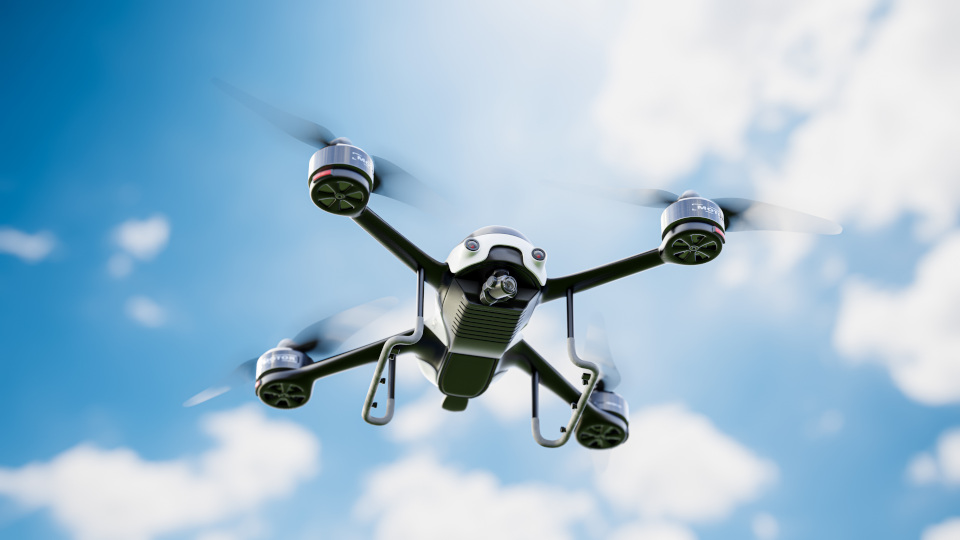DPN News, Featured, Government Services
New Paths for Drone Pilots – Police Drones Are Changing Public Safety
The Schenectady Police Department in upstate New York is making headlines with a bold new move: deploying drones as first responders to emergency calls. This initiative, known as the Drone as First Responder (DFR) program, positions the department among the few in the U.S. taking this high-tech approach to public safety.
But this isn’t just a story about policing. It’s also a clear signal to drone pilots, tech developers, and public agencies that drones are rapidly becoming a core tool in emergency response—and a new avenue for employment and innovation.

What Is a Drone First Responder Program?
Traditionally, drones in police work have been used to document crime scenes or search for suspects after incidents have occurred. Schenectady is flipping that script. In this new model, drones are launched immediately after a 911 call and often arrive on the scene before officers do. Their job? To stream live video back to command centers, providing an aerial perspective that improves decision-making in real time.
According to Police Chief Eric Clifford, the program is already proving its value: “Having a drone arrive before our officers means we get immediate situational awareness. It helps us send the right resources and keep our officers safe.”
Behind the Tech: BRINC Drones and FAA Approval
The department partnered with BRINC, a Seattle-based company specializing in tactical drones for public safety. These drones are designed with first responders in mind and include features like encrypted video, indoor flight capability, and two-way audio systems. This makes them effective for hostage situations, building searches, or crisis negotiations.
Even more impressive, the Schenectady PD secured FAA approval to operate these drones beyond visual line of sight (BVLOS)—a major step for any department using autonomous or semi-autonomous drones. With this approval, drones can fly up to 200 feet and operate out of sight of the pilot, allowing for greater reach across the city.
The project is funded by a six-year, $650,000 state grant, which covers drone hardware, automated docking stations, and support infrastructure.
A New Opportunity for Drone Pilots
While the current operators are police officers, there’s growing interest in bringing civilian drone pilots into the fold. Departments across the country—from Chula Vista, California to Brookhaven, Georgia—have already started hiring licensed drone pilots under FAA Part 107 regulations to assist with similar programs.
For certified drone pilots, this opens up exciting new roles. Instead of flying drones for photography or mapping, operators can now support real-time missions for public safety, emergency response, and even fire departments.
This shift is especially valuable for pilots with specialized skills in:
-
Operating in urban environments
-
Handling thermal or night-vision payloads
-
Managing multiple automated drones
-
Coordinating with dispatch and command units
As these programs grow, we may see more departments seeking to contract with drone service providers or establish full-time drone operator roles for civilians.
More Than Just Police Work
Schenectady’s drone program is just the beginning. The same technology being used for law enforcement can also be applied to:
-
Firefighting, with drones flying into burning buildings using thermal cameras
-
Search and rescue operations in hard-to-reach areas
-
Natural disaster assessment where ground crews face danger or obstacles
-
Crowd monitoring for large events or protests, helping with traffic flow and safety
Each of these use cases expands the field of opportunity for drone professionals while offering public agencies powerful tools to protect their communities.
Privacy and Public Trust
Of course, not everyone is cheering. Organizations like the New York Civil Liberties Union have raised concerns about privacy and surveillance. Their primary worry is that, without strict policies, drone programs could lead to overreach or the normalization of constant aerial monitoring.
Chief Clifford has been quick to address this. He stated that drones will only respond to service-related calls and will not be used for general surveillance. The department also plans to publish schedules and flight purposes online so residents know when and why drones are flying.
Striking a balance between innovation and civil liberties will be critical—not just in Schenectady, but for every city looking to deploy drone technology in public life.
Where This Is All Headed
Schenectady’s drone-first response initiative is part of a broader wave of experimentation across the U.S. More departments are applying for FAA waivers, exploring new applications for drones, and considering how to bring civilian operators into mission-critical roles.
For drone pilots, this is an important moment. The job market is evolving, and the scope of what a drone career can look like is expanding. From infrastructure inspection to real-time emergency response, drones are no longer just tools of the future—they’re here, and they’re being hired.
If you’re a certified drone pilot or training to become one, now is a good time to start thinking beyond traditional uses. The skies are opening up—and public safety may be your next landing zone.
Sources:
-
Times Union – “Schenectady police expand use of drones to respond to emergency calls”
-
BRINC Drones – www.brincdrones.com
-
FAA UAS BVLOS Guidelines – www.faa.gov/uas
-
NYCLU – www.nyclu.org
